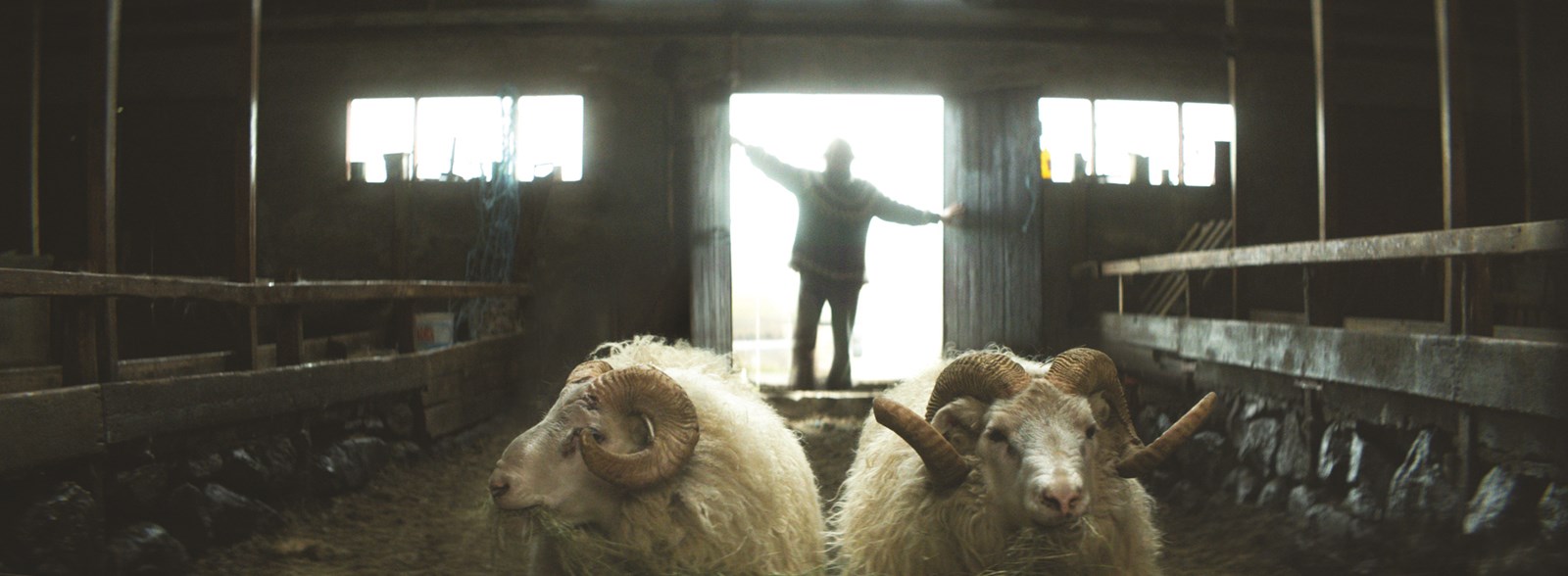Director: Grímur Hákonarson
Starring: Theodór Júlíusson, Sigurður Sigurjónsson
I went to see Rams without any prior expectations. I think this is the best way to see this deadpan Nordic film, which if it were fully described to you, would seem less endearing than it actually was.
Winner of the Un Certain Regard at last year’s Cannes Film Festival and nominated for a Best Foreign Language Oscar earlier this year, Rams is a film about a farmer in a lonely sheep farming community in Iceland and his estranged brother who lives at the next farm. The film is masterful at slow paced narrative development, unfurling at just the right pace to keep the viewers’ attention, even when some scenes continue almost longer than is comfortable.
Rams is a rural story, and people with no prior knowledge of what rural life is like might miss the clues and cues. The film shows the similarity of the wild men to their flock, the beards and hair and wool. It captures a certain European country life; middle aged bachelors that only own two jumpers, a farmer doing his paperwork in a shirt with a tear through one arm, and then meeting a lawyer at the table after the sheep have been through the house. It celebrates the absurdity of some of these situations, in a non-verbal way that’s genuinely very funny.
The movie revolves around the lives of two famers, Gummi and Kiddi, separated by a divide in the past that is never named. They live on adjacent homesteads, yet they haven’t spoken to each other in forty years, their only source of communication being messages carried by their sheepdog and an occasional shot through the window. What’s more, there’s no one else around for miles. Just seeing the forlorn bearded face of Gummi looking up at his broken window is a source of comedy.
The bleakness of the setting in winter is mirrored by the bleakness in the plot, as the movie hovers between absurdity and tragedy. I was reminded of the Irish film The Field; also set in an isolated farming community. The farmer’s connection to land in The Field serves as an analogue for connection to the flock in Rams, as the ‘Bolstad’ sheep bloodline is valued above everything else. It’s surprisingly engaging.
The setting of a barren valley in remote Iceland serves an important part in the film as it connects and isolates the community of farmers. The cinematography is beautiful, capturing the contrast of beard and wool against snow. The Icelandic landscape looks stunning, but is it possible to make a movie in Iceland without stunning scenery? Movie appearances of Iceland are most normally ‘stand in’s for another otherworldly place; the opening of Prometheus, Letters from Iwo Jima and Interstellar all use the rocky landscape as a stand in for somewhere else, so it’s nice to see the landscape used for an Icelandic tale.
Grímur Hákonarson was a documentary film maker originally, which could possibly explain how the film steers away from being overly sentimental. The story is told with a dignity that elevates it from being a European Specsavers add. Make no mistake, this is no blockbuster, and if you are looking for an action packed movie you’d better look elsewhere. This is, instead, a quiet film, with little dialogue, that celebrates little gestures.
Review by Patrick Bendall

